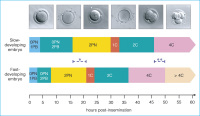| Fancsovits P et al. | ||||||||||||||||
|---|---|---|---|---|---|---|---|---|---|---|---|---|---|---|---|---|
|
Examination of Early Cleavage an its Importance in IVF Treatment
Journal für Reproduktionsmedizin und Endokrinologie - Journal of Reproductive Medicine and Endocrinology 2006; 3 (6): 367-372 Volltext (PDF) Summary Abbildungen
|
||||||||||||||||

Verlag für Medizin und Wirtschaft |
|
||||||||
|
Abbildungen und Graphiken
|
|||||||||
| copyright © 2000–2025 Krause & Pachernegg GmbH | Sitemap | Datenschutz | Impressum | |||||||||
|
|||||||||

